

دوراتنا

Measurement Systems Analysis
In this course, you will learn to analyze measurement systems for process stability and capability and why having a stable measurement process is imperative prior to performing any statistical analysis. You will analyze continuous measurement systems and statistically characterize both accuracy and precision using R software. You will perform measurement systems analysis for potential, short-term and long-term statistical control and capability.
-
Course by

-
 17 ساعات
17 ساعات
-
 الإنجليزية
الإنجليزية

Statistical Inference and Hypothesis Testing in Data Science Applications
This course will focus on theory and implementation of hypothesis testing, especially as it relates to applications in data science. Students will learn to use hypothesis tests to make informed decisions from data. Special attention will be given to the general logic of hypothesis testing, error and error rates, power, simulation, and the correct computation and interpretation of p-values.
-
Course by

-
 Self Paced
Self Paced
-
 37 ساعات
37 ساعات
-
 الإنجليزية
الإنجليزية

Algorithms for Searching, Sorting, and Indexing
This course covers basics of algorithm design and analysis, as well as algorithms for sorting arrays, data structures such as priority queues, hash functions, and applications such as Bloom filters. Algorithms for Searching, Sorting, and Indexing can be taken for academic credit as part of CU Boulder’s Master of Science in Data Science (MS-DS) degree offered on the Coursera platform. The MS-DS is an interdisciplinary degree that brings together faculty from CU Boulder’s departments of Applied Mathematics, Computer Science, Information Science, and others.
-
Course by

-
 Self Paced
Self Paced
-
 35 ساعات
35 ساعات
-
 الإنجليزية
الإنجليزية

The Structured Query Language (SQL)
In this course you will learn all about the Structured Query Language ("SQL".) We will review the origins of the language and its conceptual foundations. But primarily, we will focus on learning all the standard SQL commands, their syntax, and how to use these commands to conduct analysis of the data within a relational database.
-
Course by

-
 Self Paced
Self Paced
-
 55 ساعات
55 ساعات
-
 الإنجليزية
الإنجليزية
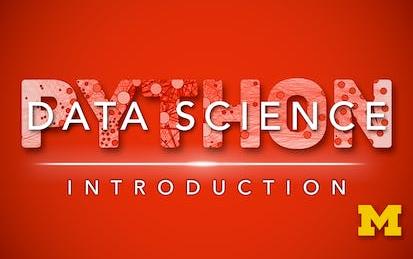
Introduction to Data Science in Python
This course will introduce the learner to the basics of the python programming environment, including fundamental python programming techniques such as lambdas, reading and manipulating csv files, and the numpy library. The course will introduce data manipulation and cleaning techniques using the popular python pandas data science library and introduce the abstraction of the Series and DataFrame as the central data structures for data analysis, along with tutorials on how to use functions such as groupby, merge, and pivot tables effectively.
-
Course by

-
 Self Paced
Self Paced
-
 35 ساعات
35 ساعات
-
 الإنجليزية
الإنجليزية

Big Data Integration and Processing
At the end of the course, you will be able to: *Retrieve data from example database and big data management systems *Describe the connections between data management operations and the big data processing patterns needed to utilize them in large-scale analytical applications *Identify when a big data problem needs data integration *Execute simple big data integration and processing on Hadoop and Spark platforms This course is for those new to data science. Completion of Intro to Big Data is recommended.
-
Course by

-
 Self Paced
Self Paced
-
 18 ساعات
18 ساعات
-
 الإنجليزية
الإنجليزية
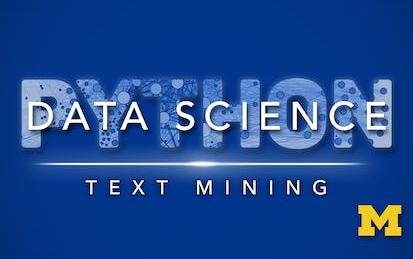
Applied Text Mining in Python
This course will introduce the learner to text mining and text manipulation basics. The course begins with an understanding of how text is handled by python, the structure of text both to the machine and to humans, and an overview of the nltk framework for manipulating text. The second week focuses on common manipulation needs, including regular expressions (searching for text), cleaning text, and preparing text for use by machine learning processes. The third week will apply basic natural language processing methods to text, and demonstrate how text classification is accomplished.
-
Course by

-
 Self Paced
Self Paced
-
 25 ساعات
25 ساعات
-
 الإنجليزية
الإنجليزية

Applied Social Network Analysis in Python
This course will introduce the learner to network analysis through tutorials using the NetworkX library. The course begins with an understanding of what network analysis is and motivations for why we might model phenomena as networks. The second week introduces the concept of connectivity and network robustness. The third week will explore ways of measuring the importance or centrality of a node in a network. The final week will explore the evolution of networks over time and cover models of network generation and the link prediction problem.
-
Course by

-
 Self Paced
Self Paced
-
 26 ساعات
26 ساعات
-
 الإنجليزية
الإنجليزية

Big Data Modeling and Management Systems
Once you’ve identified a big data issue to analyze, how do you collect, store and organize your data using Big Data solutions? In this course, you will experience various data genres and management tools appropriate for each. You will be able to describe the reasons behind the evolving plethora of new big data platforms from the perspective of big data management systems and analytical tools. Through guided hands-on tutorials, you will become familiar with techniques using real-time and semi-structured data examples.
-
Course by

-
 13 ساعات
13 ساعات
-
 الإنجليزية
الإنجليزية

Fundamentals of Scalable Data Science
Apache Spark is the de-facto standard for large scale data processing. This is the first course of a series of courses towards the IBM Advanced Data Science Specialization. We strongly believe that is is crucial for success to start learning a scalable data science platform since memory and CPU constraints are to most limiting factors when it comes to building advanced machine learning models.\n\nIn this course we teach you the fundamentals of Apache Spark using python and pyspark.
-
Course by

-
 Self Paced
Self Paced
-
 22 ساعات
22 ساعات
-
 الإنجليزية
الإنجليزية

Business Writing
Writing well is one of the most important skills you can develop to be successful in the business world. Over seventy companies and thirty thousand students--from professional writers to new employees to non-native English speakers to seasoned executives--have used the techniques in Business Writing to power their ability to communicate and launch their ideas.
-
Course by

-
 Self Paced
Self Paced
-
 13 ساعات
13 ساعات
-
 الإنجليزية
الإنجليزية

Data Visualization
The specialization "Data Visualization" is intended for post-graduate students seeking to develop advanced data visualization skills. Through three comprehensive courses, you will explore foundational and specialized visualization techniques, including data representation, design principles, network visualization, and volume rendering. As organizations increasingly rely on data for decision-making, the ability to effectively visualize and analyze complex datasets is more valuable than ever.
-
Course by

-
 Self Paced
Self Paced
-
 16 ساعات
16 ساعات
-
 الإنجليزية
الإنجليزية

Big Data - Capstone Project
Welcome to the Capstone Project for Big Data! In this culminating project, you will build a big data ecosystem using tools and methods form the earlier courses in this specialization. You will analyze a data set simulating big data generated from a large number of users who are playing our imaginary game "Catch the Pink Flamingo". During the five week Capstone Project, you will walk through the typical big data science steps for acquiring, exploring, preparing, analyzing, and reporting.
-
Course by

-
 Self Paced
Self Paced
-
 21 ساعات
21 ساعات
-
 الإنجليزية
الإنجليزية
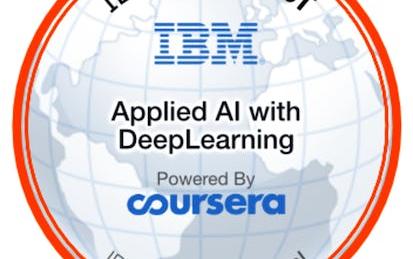
Applied AI with DeepLearning
>>> By enrolling in this course you agree to the End User License Agreement as set out in the FAQ. Once enrolled you can access the license in the Resources area
-
Course by

-
 Self Paced
Self Paced
-
 25 ساعات
25 ساعات
-
 الإنجليزية
الإنجليزية

Applied Machine Learning in Python
This course will introduce the learner to applied machine learning, focusing more on the techniques and methods than on the statistics behind these methods. The course will start with a discussion of how machine learning is different than descriptive statistics, and introduce the scikit learn toolkit through a tutorial. The issue of dimensionality of data will be discussed, and the task of clustering data, as well as evaluating those clusters, will be tackled.
-
Course by

-
 31 ساعات
31 ساعات
-
 الإنجليزية
الإنجليزية
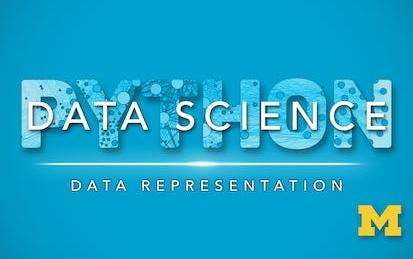
Applied Plotting, Charting & Data Representation in Python
This course will introduce the learner to information visualization basics, with a focus on reporting and charting using the matplotlib library. The course will start with a design and information literacy perspective, touching on what makes a good and bad visualization, and what statistical measures translate into in terms of visualizations. The second week will focus on the technology used to make visualizations in python, matplotlib, and introduce users to best practices when creating basic charts and how to realize design decisions in the framework.
-
Course by

-
 Self Paced
Self Paced
-
 24 ساعات
24 ساعات
-
 الإنجليزية
الإنجليزية

Mathematical Thinking in Computer Science
Mathematical thinking is crucial in all areas of computer science: algorithms, bioinformatics, computer graphics, data science, machine learning, etc. In this course, we will learn the most important tools used in discrete mathematics: induction, recursion, logic, invariants, examples, optimality. We will use these tools to answer typical programming questions like: How can we be certain a solution exists? Am I sure my program computes the optimal answer?
-
Course by

-
 Self Paced
Self Paced
-
 42 ساعات
42 ساعات
-
 الإنجليزية
الإنجليزية

Advanced Machine Learning and Signal Processing
>>> By enrolling in this course you agree to the End User License Agreement as set out in the FAQ. Once enrolled you can access the license in the Resources area <<<\n\nThis course, Advanced Machine Learning and Signal Processing, is part of the IBM Advanced Data Science Specialization which IBM is currently creating and gives you easy access to the invaluable insights into Supervised and Unsupervised Machine Learning Models used by experts in many field relevant disciplines.
-
Course by

-
 28 ساعات
28 ساعات
-
 الإنجليزية
الإنجليزية

Introduction to Big Data
Interested in increasing your knowledge of the Big Data landscape? This course is for those new to data science and interested in understanding why the Big Data Era has come to be. It is for those who want to become conversant with the terminology and the core concepts behind big data problems, applications, and systems. It is for those who want to start thinking about how Big Data might be useful in their business or career.
-
Course by

-
 Self Paced
Self Paced
-
 17 ساعات
17 ساعات
-
 الإنجليزية
الإنجليزية

Identifying the Right Role for Yourself
Data science and artificial intelligence are exciting, growing fields with a lot to offer prospective job seekers. However, even with the massive growth in technology and positions, there are still many barriers to entry. This course explores today’s challenges and opportunities within data science and artificial intelligence, the varying skills and education necessary for some commonly confused positions, as well as the specific job duties associated with various in-demand roles.
-
Course by

-
 Self Paced
Self Paced
-
 9 ساعات
9 ساعات
-
 الإنجليزية
الإنجليزية

SQL for Data Science
As data collection has increased exponentially, so has the need for people skilled at using and interacting with data; to be able to think critically, and provide insights to make better decisions and optimize their businesses. This is a data scientist, “part mathematician, part computer scientist, and part trend spotter” (SAS Institute, Inc.). According to Glassdoor, being a data scientist is the best job in America; with a median base salary of $110,000 and thousands of job openings at a time.
-
Course by

-
 Self Paced
Self Paced
-
 14 ساعات
14 ساعات
-
 الإنجليزية
الإنجليزية

Excel Basics for Data Analysis
Spreadsheet tools like Excel are an essential tool for working with data - whether for data analytics, business, marketing, or research. This course is designed to give you a basic working knowledge of Excel and how to use it for analyzing data. This course is suitable for those who are interested in pursuing a career in data analysis or data science, as well as anyone looking to use Excel for data analysis in their own domain.
-
Course by

-
 Self Paced
Self Paced
-
 12 ساعات
12 ساعات
-
 الإنجليزية
الإنجليزية

Data Processing and Feature Engineering with MATLAB
In this course, you will build on the skills learned in Exploratory Data Analysis with MATLAB to lay the foundation required for predictive modeling. This intermediate-level course is useful to anyone who needs to combine data from multiple sources or times and has an interest in modeling. These skills are valuable for those who have domain knowledge and some exposure to computational tools, but no programming background.
-
Course by

-
 Self Paced
Self Paced
-
 20 ساعات
20 ساعات
-
 الإنجليزية
الإنجليزية
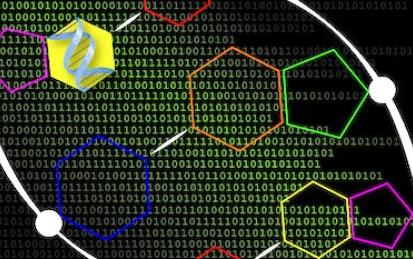
Introduction to Genomic Technologies
This course introduces you to the basic biology of modern genomics and the experimental tools that we use to measure it. We'll introduce the Central Dogma of Molecular Biology and cover how next-generation sequencing can be used to measure DNA, RNA, and epigenetic patterns. You'll also get an introduction to the key concepts in computing and data science that you'll need to understand how data from next-generation sequencing experiments are generated and analyzed. This is the first course in the Genomic Data Science Specialization.
-
Course by

-
 Self Paced
Self Paced
-
 6 ساعات
6 ساعات
-
 الإنجليزية
الإنجليزية

Data Science in Real Life
Have you ever had the perfect data science experience? The data pull went perfectly. There were no merging errors or missing data. Hypotheses were clearly defined prior to analyses. Randomization was performed for the treatment of interest. The analytic plan was outlined prior to analysis and followed exactly. The conclusions were clear and actionable decisions were obvious. Has that every happened to you? Of course not. Data analysis in real life is messy. How does one manage a team facing real data analyses? In this one-week course, we contrast the ideal with what happens in real life.
-
Course by

-
 Self Paced
Self Paced
-
 7 ساعات
7 ساعات
-
 الإنجليزية
الإنجليزية



